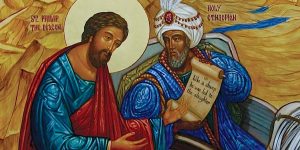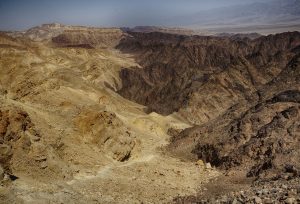
Nature’s seasons are a constant reminder that nothing we do or experience in life is permanent. I was part of a mega-church community in Melbourne, Australia, for over thirty years. I never thought that season would come to an end. But it did.
One of the last sermons I gave at this church was on Philip’s encounter with a eunuch in a dusty Palestinian desert, as narrated in Acts 8. Hindsight is a most wonderful thing – looking back now I see the significance of that message in my own life. It is helping me as I learn to dream again, as I reflect on the religion of Christianity and what it has become in modern times, and specifically on the possibilities of a movement that focuses on the love and words of Christ.
Below are some of the notes from this sermon – I will post them over a couple of blogposts so as not to overwhelm the reader 🙂
… The book of Acts, in the New Testament of the Bible, contains vital information linking the life of Jesus and the various epistles (or letters) written after his death. Taking centre stage in this book are two men: Peter and Paul. If it wasn’t for Acts we would know very little about them, especially Paul and his motivation that took him to distant lands. Without Acts we would also not know about Philip, a Eunuch, and questions in the desert …
In Acts 8, we find a disciple of Christ called Philip. The suggested author of Acts, Luke, has taken time to develop Philip’s persona: he was someone who had spread the Gospel in Samaria, and was working throughout the territory of Judea and up the coast to Caesarea. Philip is portrayed as prophetic: he proclaims the Gospel with signs and wonders, he speaks with angels, he is whisked up by the Spirit, and he runs alongside the chariots of mighty men. Luke is painting the prophetic missional character of Philip as a forerunner of the prophetic mission and mandate of the Gospel.
Philip encounters a man from the ‘ends of the earth’. This eunuch is from Ethiopia, which is known in the Bible as the land of Cush. It does not correspond to modern Ethiopia but rather the Nubian kingdom whose capital was Meroe, south of Egypt, which is part of modern-day Sudan.
The eunuch was a wealthy man – he had a carriage, he could read, he had a driver, and he was in charge of the treasury of Candace, queen of the Ethiopians (a dynasty, not a personal name). He represented people that to the Jewish Christians were at the ‘ends of the earth’. He also represents a people group who have been ostracized and kept away from Yahweh because of his very identity as a eunuch – a mutilated one.
In antiquity, eunuchs belonged to the most abhorred and ridiculed group of men, often being slaves who had been castrated to inflict punishment or enact servitude. If they did rise to a position of prominence they could not escape the stigma of their sexless condition. Eunuchs did at times rise above their social status and find employment at the imperial court, but they would always be victims of negative stereotyping and ridicule during the Persian period. They were always on the outside – Exclusion was a part of life for them.
Absence of sexual organs meant that eunuchs were stigmatized due to their inability to reproduce and represent that culture’s idea of the traditional family. Their ‘otherness’ was amplified not only by their sexual difference and childless state, but also their exclusion from worshipping in the temple with the rest of God’s family. In Deuteronomy 23:1, it says that “no one who is emasculated or has his male organ cut off shall enter the assembly of the Lord.” This man carried the stigma of imperfection and immorality.
This eunuch, although he would be excluded from the religious festival in Jerusalem, went to worship anyway. And now God came looking for him, the outcast, the stigmatized – and in a marvelous scandalous way he becomes wholly accepted.
“This eunuch, symbolizing the community of ostracised sexual minorities, is among the first of the outcasts from ancient Israel to be welcomed into Jesus’ discipleship of equals.”
– Jerome Neyrey, paper on the social world of Luke-Acts.
This is indeed a strange and scandalous story. I don’t think those early Jerusalem Christians ever imagined this is what the ‘Gospel to the ends of the earth’ message looked like. Perhaps, like us today, they had a much neater, less risqué, ideal of what it would mean for the good news of an incarnate Christ to travel outside their boundaries and tightly held dogma.
So when we talk about the ‘Gospel’, does it ever occur to us that this God of messy humanity will deliberately mess with our heads and take us as far out of our comfort zone as our obedience allows?

… Part Two and the first question in next blog …
![]()

We are no longer in Dubai, thanks for asking. The inlaws still are so we Skype/FaceTime daily.
I was so excited to find your blog Nicole. I had been listening to your podcasts online for a couple of years in Dubai and when I heard this one..then nothing for ages, well I’m very thankful your writing again. Praise God. Thanks for standing up for what is right and challenging others to do the same. Looking forward to reading more.
How lovely to hear from you and thank you for your kind message. Are you still in Dubai?